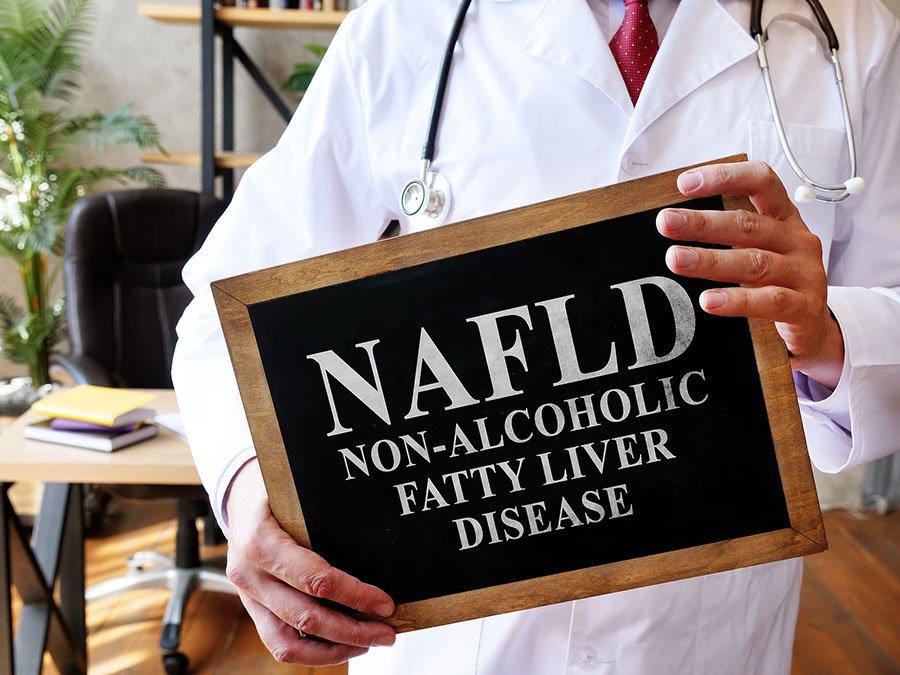 Nonalcoholic fatty liver disease (NAFLD) is usually considered a lifestyle disease caused by overeating and obesity, with no simple cure.
Nonalcoholic fatty liver disease (NAFLD) is usually considered a lifestyle disease caused by overeating and obesity, with no simple cure.
However, a new study in Nature Communications reveals a type of bacteria that is actually the cause of this disease and is treatable with simple antibiotics.
A team of researchers led by the University of Missouri School of Medicine fed mice a diet high in fat and sugar and then checked the makeup of their gut bacteria.
The mice now had a substantially higher number of bacteria called Blautia producta than the mice on healthier diets did.
Blautia producta is a species of bacteria that is supposed to be present in our intestines. It plays important roles in our health, including regulating inflammation, maintaining the gut barrier function, and producing energy.
However, if there is too much Blautia producta in the intestines, inflammation and fat storage increase. That is what happened to these mice.
The portal vein is a blood vessel that carries blood from the gastrointestinal tract to the liver. These unhealthy bacteria travel to the liver, where they cause inflammation and fat storage. This is how the mice developed NAFLD.
The researchers tested this finding in another study in which they fed the mice antibiotics that could destroy some of the Blautia producta. The antibiotic treatment reduced liver inflammation and the amount of fat stored in the mice livers.
You don’t want to kill Blautia with antibiotics because you need some of it in your gut. Instead, you need to manage its population with better diet choices.

 Overcoming IBD
Overcoming IBD Multiple Sclerosis
Multiple Sclerosis Banishing Bronchitis
Banishing Bronchitis Gum Disease Gone
Gum Disease Gone Overcoming Onychomycosis
Overcoming Onychomycosis Neuropathy No More
Neuropathy No More The Prostate Protocol
The Prostate Protocol Brain Booster
Brain Booster
 Ironbound
Ironbound
 Solution for Shingles
Solution for Shingles
 The Bone Density Solution
The Bone Density Solution
 The Ultimate Healing Protocol
The Ultimate Healing Protocol
 The Parkinson's Protocol
The Parkinson's Protocol
 The Chronic Kidney Disease Solution
The Chronic Kidney Disease Solution
 Overthrowing Anxiety
Overthrowing Anxiety The Fatty Liver Solution
The Fatty Liver Solution The Hypothyroidism Solution
The Hypothyroidism Solution
 The End of Gout
The End of Gout The Blood Pressure Program
The Blood Pressure Program
 The Oxigized Cholesterol Strategy
The Oxigized Cholesterol Strategy
 Stop Snoring And Sleep Apnea Program
Stop Snoring And Sleep Apnea Program
 The Arthritis Strategy
The Arthritis Strategy The Vertigo & Dizziness Program
The Vertigo & Dizziness Program The 3-Step Diabetes Strategy
The 3-Step Diabetes Strategy Hemorrhoids Healing Protocol
Hemorrhoids Healing Protocol The Erectile Dysfunction Master
The Erectile Dysfunction Master Weight Loss Breeze
Weight Loss Breeze The IBS Program
The IBS Program The Insomnia Program
The Insomnia Program The Migraine and Headache Program
The Migraine and Headache Program The Neck Pain Solution
The Neck Pain Solution The Menopause Solution
The Menopause Solution The Ejaculation Master
The Ejaculation Master The TMJ Solution
The TMJ Solution The Acid Reflux Solution
The Acid Reflux Solution The Fibromyalgia Solution
The Fibromyalgia Solution The Psoriasis Strategy
The Psoriasis Strategy